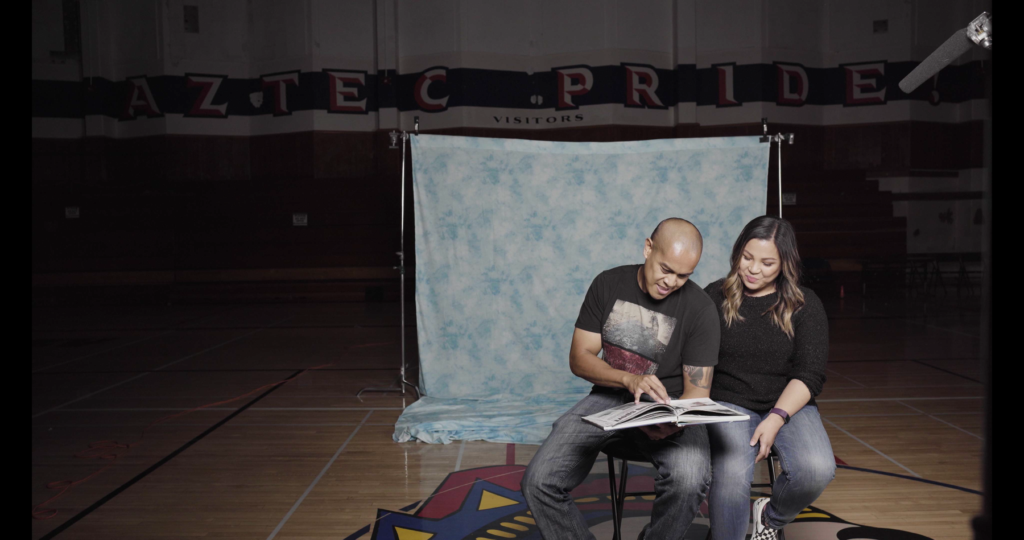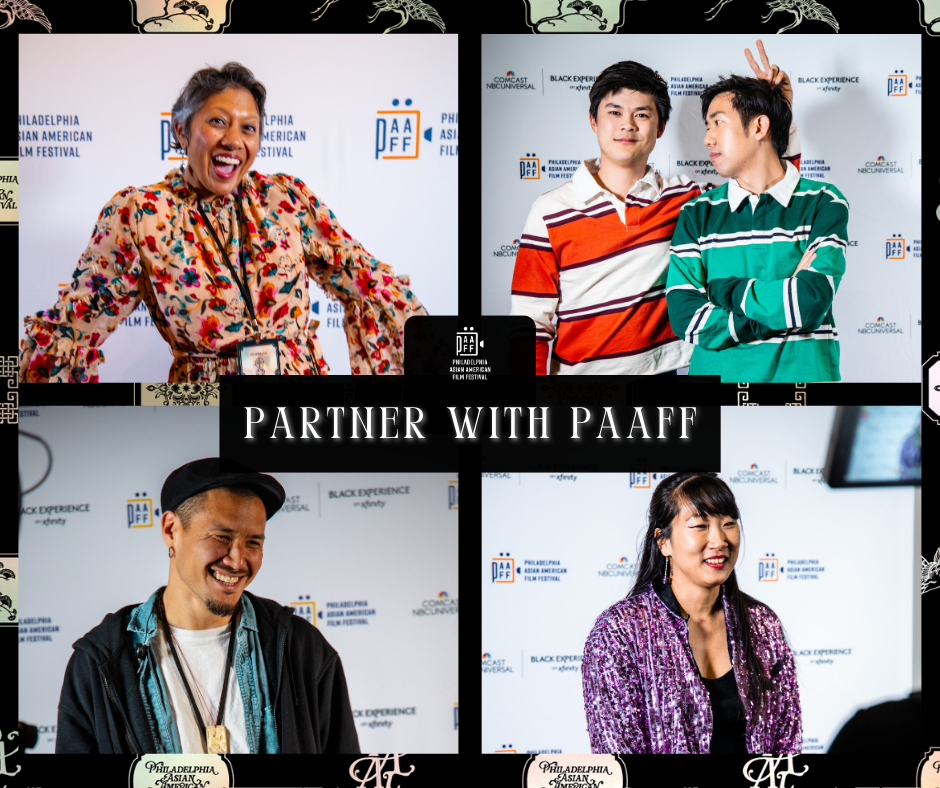What is paradise? How do we find it? A mortuary worker, a restaurant with karaoke singers, an immigrant father, a class of high school students—these four stories take place in San Diego, a refugee city situated next to a militarized border.

The Paradise We Are Looking For presents the Vietnamese, Korean, and Filipino Americans of San Diego and their stories through an experimental documentary, in collaboration with four filmmakers. Brian Hu, a producer on this film and Artistic Director at Pacific Arts Movement in San Diego, spoke to PAAFF about the significance of bringing these stories together and the idea of a “Paradise”.
What is the origin of this project? How did four filmmakers come together to collaborate on this documentary?
Brian Hu: There were two initial impulses. One was to reflect upon Asian American histories in San Diego. What were the relationships between the younger and older generations? What are the stories we tell of the community, and which get buried and forgotten? The second impulse was to highlight neighborhoods in San Diego with significant Asian American populations. These tend to be areas that are overlooked when it comes to city development, tourism attention, or what constitutes San Diego history. That these neighborhoods tend to be less white is no coincidence. The four filmmakers are all ones we’ve been following for many years. I invited them to contribute, knowing their personal ties to the city, their thoughtfulness when it comes to community, place, and home, and their general adventurousness when it comes to documentary style. All of them jumped at the opportunity to make something in San Diego, which some of them hadn’t done in quite a while.
Why did you decide to stitch together four different documentary styles? Is there a reason for how the four documentaries are sequenced?
Brian Hu: The four filmmakers were encouraged to define “documentary” however they wished and I was pleased by how different they all were, whether they were essayistic, observational, or personal. They were even in all different aspect ratios, something we did not anticipate or ask for. The sequencing takes the viewer north to south across the city. But we also wanted to start with a palate cleanser. Norbert’s film, with its quiet, non-expository style, resets any preconceptions about what might follow. We wanted to end with R.J.’s film, which was most consciously about looking back to look forward, an appropriate gesture to how these histories can be meaningful in the future.
How does this experimental style shape how you tell the stories of Asian Americans in San Diego?
Brian Hu: It was important that we did not homogenize Asian America in San Diego, a city where Asian Americans have arrived for vastly different reasons — the military, as refugees, through UC San Diego — and with different experiences of privilege and access to telling their own stories. We wanted every break between shorts to feel like another reset, with new possibilities of emotion and experience written upon the last, not with any obvious continuity but as yet another way to tell an Asian American story. If there is any continuity, it’s that none of these filmmakers do traditional documentary history. There are no interviews with scholars or leaders, or animations or maps. They’re all grounded in the people and places of these neighborhoods without reference to the historical authority that the film is in some ways critiquing.
Tell me about the reference to a paradise. How did you decide on this concept for the documentary?
Brian Hu: The title of the film is firstly a reference to lê thi diem thúy’s novel The Gangster We Are All Looking For, probably the most prominent creative work about Asian Americans in San Diego. We wanted to honor her legacy of telling one’s own history here, to build upon her acute and lasting etchings of growing up a refugee, demanding to be looked at as more than a remnant of war. “Paradise” is a reference to the neighborhood of Paradise Hills (or the “PH”), which has a huge Filipino population, and which is around where Joe’s karaoke film is shot. Beyond geography, that notion of “paradise” tied nicely to the dreams of success, expression, refuge, and happiness expressed by the characters in the films. In the case of a Korean man who lost everything tragically, “paradise” was a cruel illusion. For others, it is created through personal will or in community spaces of pleasure or mourning. I think many immigrants work through this vexed notion of America as “paradise.” Think of all the Asian languages that call America some variant of “beautiful country.” We also hope to conjure something utopic that perhaps is still possible in San Diego. After all, we’re here anyway.
What challenges did you face while putting this documentary together?
Brian Hu: The biggest challenge is that filmmakers from San Diego, or who studied in San Diego, tend to leave eventually. The city is not a huge media town, and Los Angeles is just a temptation away. When the film was produced, only one of the four filmmakers was living in San Diego, so the directors were coordinating everything from afar and had short windows during which to shoot locally. If the film has a nostalgic, bittersweet quality, it’s because these filmmakers have perhaps developed an arm’s distance from the city in their years since moving. It’s a place where their family and old friends are, or where they have memories rather than everyday encounters. For us, it also became a moving way to think about history too; how is the city remembered when you take a short step away?
What do you hope audiences take away from this documentary? What do you hope audiences who are unfamiliar with San Diego’s community take away?
Brian Hu: At the very least, we hope that audiences learn about some folks whose experiences they find meaningful or memorable. Beyond that, we hope to show how complicated San Diego is politically and demographically. The city has a reputation for sunshine and conservatism, neither of which correspond to the paradises on display in our films. We especially want to show how militarism is experienced on an everyday level, whether that is living under fighter jet paths, or going to school next to a militarized border, or sharing a stage with Filipino uncles flaunting their military credentials, or taking care of a generation here because of America’s wars.
The Paradise We Are Looking For is also the opening night film for the 20th San Diego Asian Film Festival. Has the documentary been received differently outside of and within San Diego?
Brian Hu: The opening night screening was powerful because of the local significance of the film. It was such a rare opportunity to put ourselves on the screen, let alone on our 20th anniversary in a sparkling new venue. Outside of San Diego, the film becomes something of a curiosity, that this may or may not be what they were expecting from a San Diego film. Outside of San Diego, there’s also additional attention paid to the filmmakers and their worldviews, rather than simply discussion of the historical significance of their representation. We’re also hoping that the film appeals outside of San Diego for the ways that the film doesn’t immediately resemble San Francisco, New York, or Los Angeles. There are a lot of cities throughout the country with important Asian American histories that have yet to be told, where notions of Asian American community are still in emergence and conflict. Hopefully, the film can occasion conversations about what that emergence might look like.
Film festivals are significant in allowing marginalized groups to have agency over their work. What do you think it will take for marginalized communities to have agency over their stories in the mainstream? Tell me about your hopes or vision for Asian American films in the mainstream.
Brian Hu: I’ve become a little jaded about Asian American films in the mainstream because I’ve seen them come and go in waves. That said, I’m heartened by what’s happening on streaming services, such as The Half of It on Netflix or PEN15 on Hulu which have a verve that goes well beyond just representation, and allows these makers and performers to stretch in new creative directions. But ultimately, that’s not the agency I’m most interested in, as they still rely on corporate gatekeepers who don’t ultimately have our communities in mind. Film festivals remain essential because it allows us to have critical conversations, not just about what will sell or not, but what stories and images we want to share with each other. They help us better reflect on ourselves as political and community agents, as lovers of film and art, as supporters to the most independent of voices, and as allies to our diverse communities and marginalized groups everywhere. Where else but film festivals is this happening now?
Watch the Q&A with the directors LIVE on 11/15 at 4:30 P.M. EST. You can purchase tickets for the film here.


